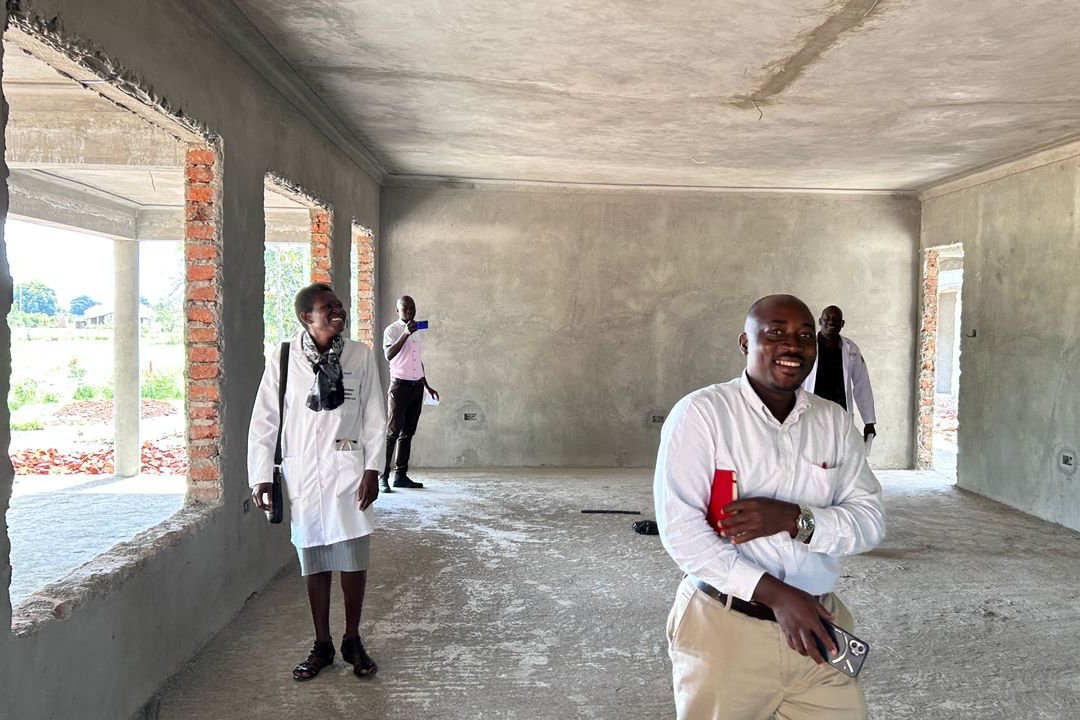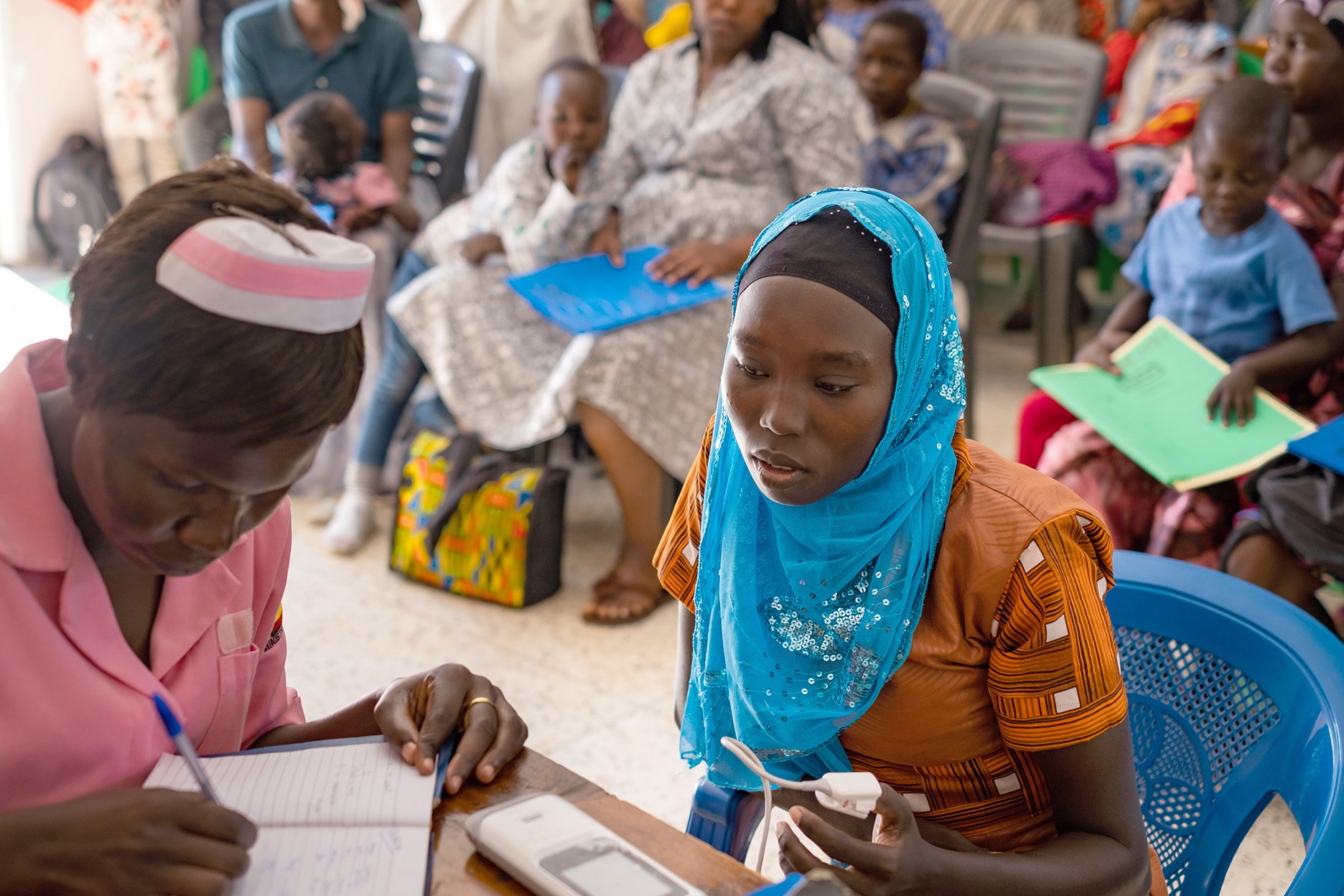Building for the Future
The PEN-Plus clinic in eastern Uganda began as a gathering under a tree and has blossomed from there.
Twenty-two-year-old Rukia Aumo receives care for her sickle cell disease at the PEN-Plus clinic in Atutur, Uganda. The Teso subregion of eastern Uganda, where the clinic is located, has one of the country’s highest prevalence rates of sickle cell disease. Photo: © Badru Katumba / World Health Organization
For years, the leafy canopy of a majestic acacia has provided visitors to Atutur General Hospital in eastern Uganda with more than a respite from the hot sun; it has also sheltered an open-air clinic for people living with sickle cell disease.
“A critical lack of funding meant the hospital couldn’t expand to accommodate all the people who needed care,” said Dr. Wubaye Dagnaw, the East Africa regional advisor for the NCDI Poverty Network. “On clinic days, hundreds of children with sickle cell disease would gather under the tree for their treatment. To call these circumstances less than ideal for providing care would be a dramatic understatement.”
Fortunately, this PEN-Plus clinic now has a home in a newly built structure adjacent to the hospital. The clinic held its groundbreaking in May 2023 and its official opening six months later. The Uganda Initiative for Integrated Management of Noncommunicable Disease now works with the Uganda Ministry of Health to support both the PEN-Plus clinic in Atutur and one housed at Nakaseke General Hospital in central Uganda.
Funded through the NCDI Poverty Network in collaboration with the Ministry of Health, the 325-square-meter structure houses three consultation rooms, a treatment room, a training center that can accommodate more than 80 people, a laboratory, a counseling room, a pharmacy, a data center, an office, and a staff tearoom. The reception area can host several dozen people at a time.
“After years of carrying the extra burden of clinic days under a tree,” said Dr. Dagnaw, “patients now receive their treatment in the setting they deserve.”





